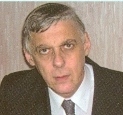
Jorge C. Trainini
Hospital Presidente Perón, Argentina
Title: Ventricular torsion and cardiac suction effect: The electrophysiological analysis of the cardiac band muscle
Biography
Biography: Jorge C. Trainini
Abstract
The Torrent Guasp concept postulates that the ventricles are formed by a continuous muscle band that begins at the level of the pulmonary valve and extends to the aortic root, limiting in this way the two ventricular chambers. This specific anatomical arrangement would support the interpretation of two fundamental aspects of left ventricular dynamics: 1) the torsion mechanism and 2) the physiology of rapid diastolic filling by the suction effect. To investigate the electrophysiological basis of this mechanism, the left ventricular activation sequence was studied by 3D electroanatomical mapping (EAM) in five patients, during radiofrequency ablation of arrhythmias associated to probable abnormal epicardial pathways. As the descending band segment is endocardial and the ascending band segment is epicardial, two approaches were used to perform the mapping.
Conclusions: 1) 3D endo-epicardial mapping shows electrical activation of the apical loop concurrent with synchronic contraction of the ascending and descending band segments; 2) The simultaneous and opposing activation of the ascending band segment to the starting point of its radial activation from the descending band segment, at the point where both band segments cross, is consistent with the clockwise and anticlockwise ventricular torsion of apical and basal areas; 3) Late activation of the ascending band segment, compatible with persistent contraction of the ascending band segment during early isovolumic diastole (basis of the suction mechanism) is produced without need to postulate electrical activation beyond the QRS. The novel activation sequence of the Torrent Guasp band found in this study would explain the previous process triggering the ventricular torsion and suction mechanism. Moreover, this work demonstrates that activation of the ascending band segment completes the QRS. This finding explains the persistent contraction of this muscle segment during early diastole, rejecting the traditional concept of passive relaxation.
